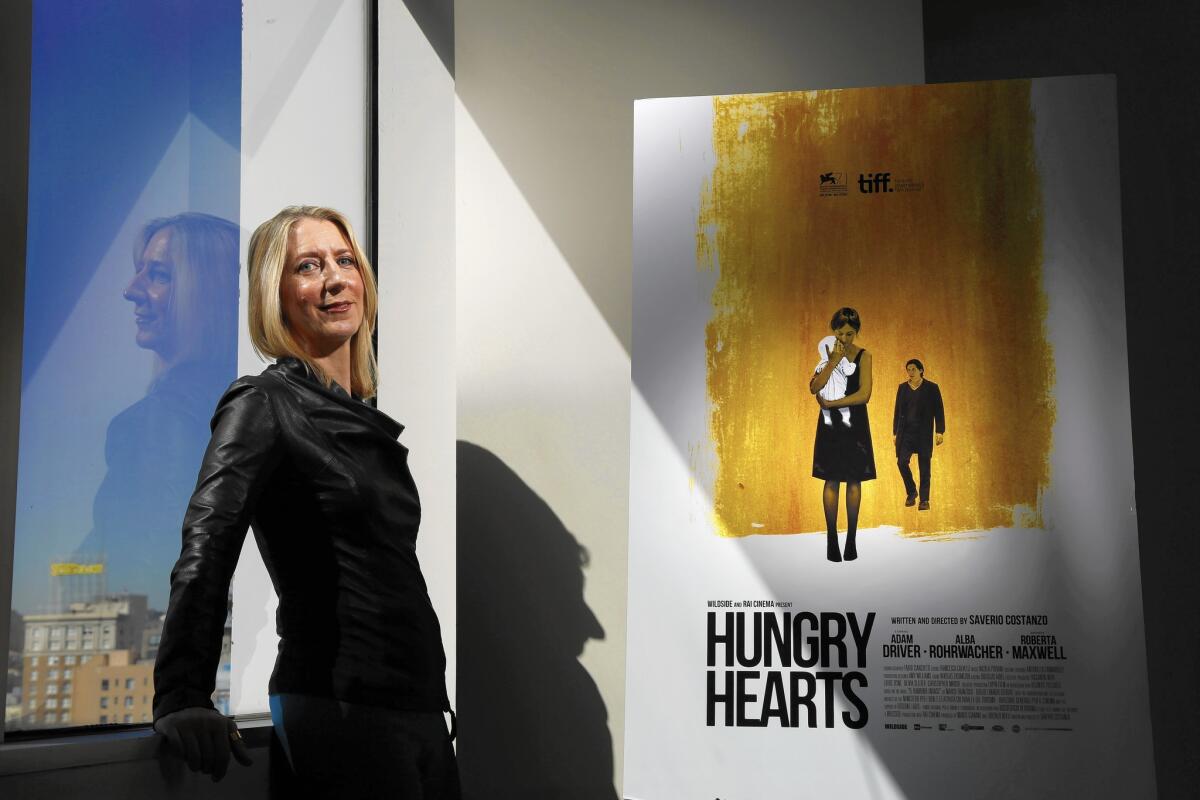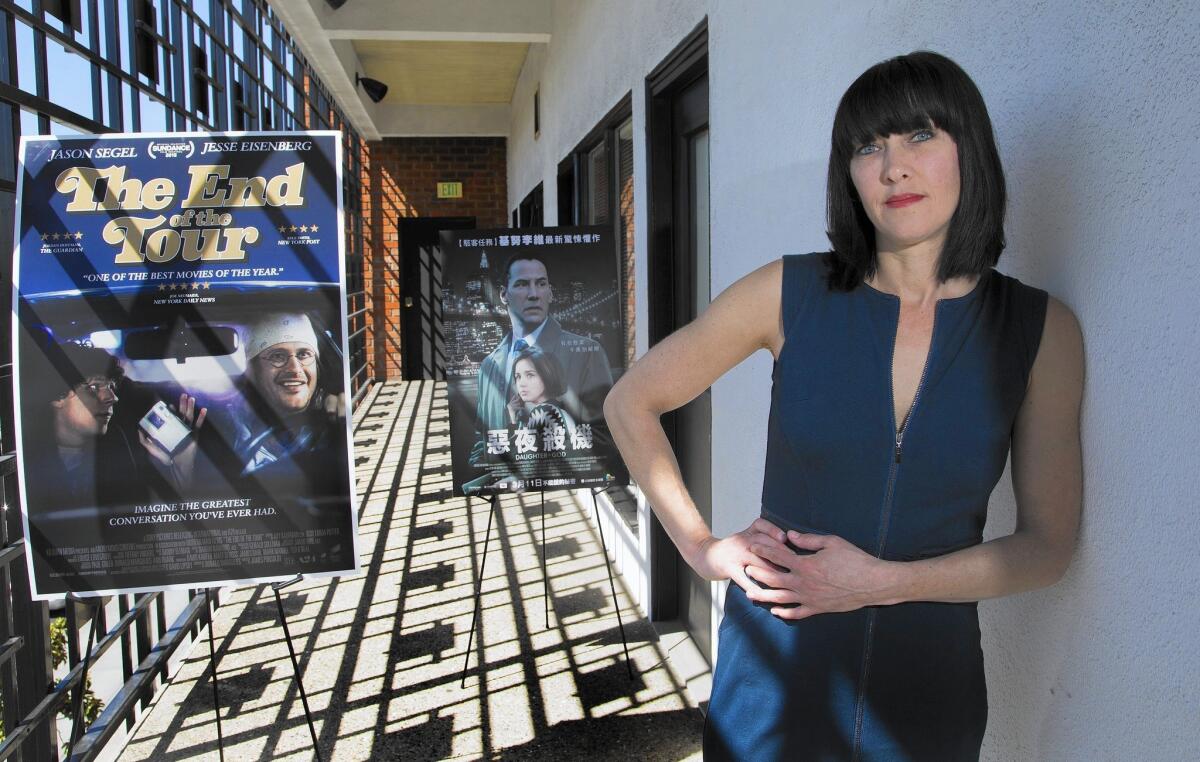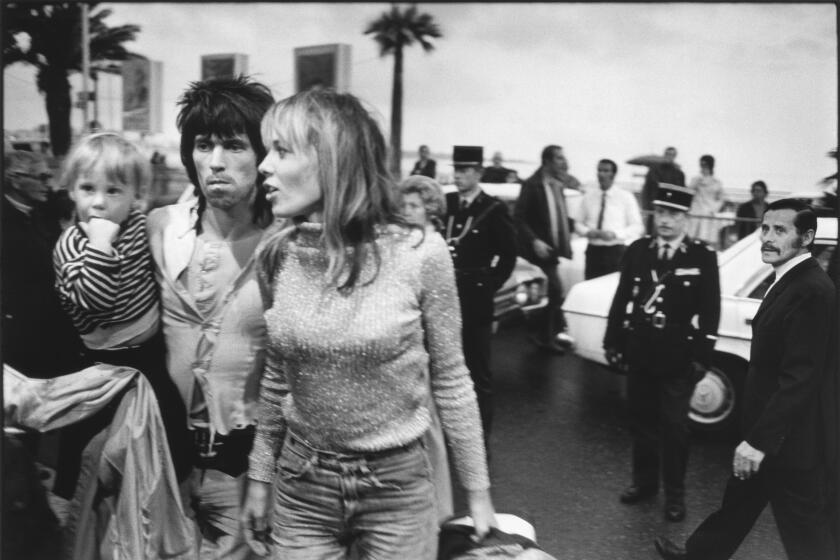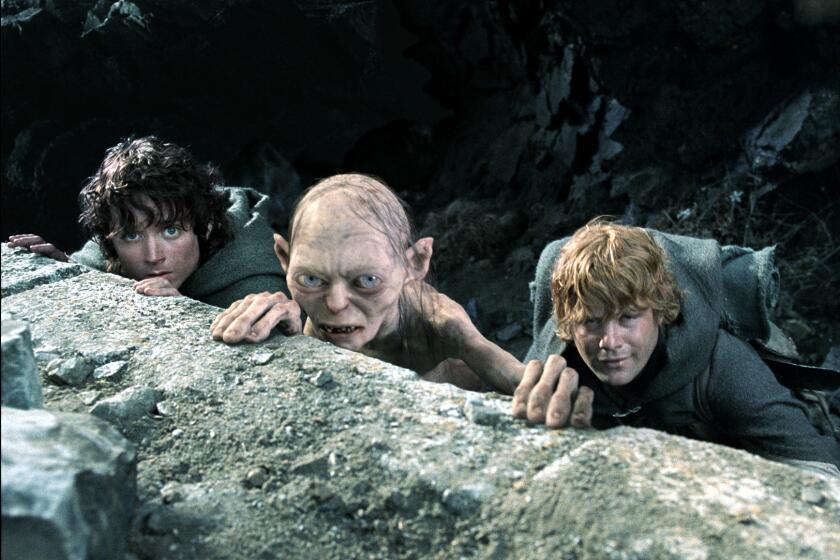Not all American films travel easily. It takes expertise to connect them with foreign audiences
Like many in the film distribution business, Mimi Steinbauer has a story — “funniest example ever” — of the ingenious sleight of hand in marketing American movies to foreign lands.
In her case it was “Machete,” a picture by Robert Rodriguez about a Mexican drug lord, an ex-federal agent and a racist Texas senator. With comedy, satire and caricature, the film was a violent and outlandish comment on America’s immigration debate.
Buyers in Thailand, however, weren’t interested in political overtones. “The Thais called it ‘Machete: Splatter Blood’ and there was blood all over the poster,” said Steinbauer, president and chief executive of Radiant Films International in Los Angeles. “I said, ‘You can’t call it that.’ But they said it would work and it did. It wasn’t a lie per se. It wasn’t a slasher film, but they knew their audience.”

Distributing and marketing American films to other countries is a game of deciphering aesthetics and culture. What appeals to one nation may turn off another. Europe prefers sex to shootouts, while Asia and the Middle East are rapt by action and violence. Italians recoil at science fiction, Argentines drift toward the intellectual, Russians adore “Minions” but are cool to interracial love stories, and one distributor described American dramas as “the big dirty word in our business.”
Race, politics, religion all factor into how films are packaged. Steinbauer and other U.S.-based film distributors are intimate with local markets and how an American distribution campaign may have to be recast — at times dramatically so — to resonate abroad.
Understanding international preferences is crucial as Hollywood and independent filmmakers reach for larger global shares. World-wide ticket sales reached a record-breaking $38.3 billion last year. More than 70% of the film industry’s box office is generated overseas, a figure that is increasingly driving strategy and financing decisions.
Tapping into the fascinations of audiences from Beijing to Brussels is a high-stakes alchemy of language, allure, censorship, the style of a trailer, the background color of a poster and the bankability of a star such as Nicolas Cage, who despite a declining career is still a good bet in Asia. Such calculations require people with on-the-ground knowledge of specific regions — the kind of innate sensitivity you can’t learn in Hollywood.
“You have to pay attention to the nuances and cultures of every country,” said Pedro Rodriguez, president of International Distribution Co., who has been distributing films in Latin America for three decades. “Each has its own DNA. There’s no bible to this. It’s like drinking the Kool-Aid from each place. We’re not selling shoes here. Each movie is a piece of art. How do we find its audience?”
That has been complicated by a younger generation driven by social media, the growing sophistication of TV markets and the populism of Netflix and Amazon, which has given viewers the power to tailor their entertainment. American films are also encountering competition from indigenous studios and filmmakers in countries such as Germany, Turkey, France, South Korea, Mexico and Guatemala, which has a vibrant young production industry.
“Hollywood is hitting serious competition from local TV and film productions,” said Jean M. Prewitt, president and chief executive of the Independent Film & Television Alliance. “More countries are producing world-quality films. We’re certainly seeing that.”
Independent financiers and distributors are trying to “squeeze as much money out of as many movies as we can because there’s so little to be made,” said Nadine de Barros, co-founder of Fortitude International, a foreign sales and finance company based in Sherman Oaks. “The first thing everyone wants to do it is put numbers on paper to reassure investors that they’ll get their money back. I put a number on each territory and what I call my worst-case-scenario number for each country.”
Recasting posters has become a surreal art form in some territories and is often indicative of racial prejudices and playing on established stars. Chinese posters for “Star Wars: The Force Awakens” shrunk the face of John Boyega, the black actor who played Finn, one of the film’s lead characters. In 2013, Italian marketers prominently displayed Brad Pitt on a poster for “12 Years a Slave.” Pitt had a cameo in the movie but his dominance on the poster — aglow in Renaissance-like visage — overshadowed Chiwetel Ejiofor, the black star.
It wasn’t the poster for Helen Mirren’s new film about drone warfare — “Eye in the Sky” — that concerned Rodriguez. He knew that Latin America’s large Catholic population might read the title as a reference to God watching from above. The name was changed to “Invisible Enemy.” Such, he said, are the equations of marketing, many of which are likely to change markedly in coming years as distributors reach for younger audiences who have a wider sense of the globe.
A personal touch
Selling movies often relies on finesse and a personal touch. De Barros was working for Voltage Pictures when she was shopping “The Hurt Locker,” an Iraq war story about a U.S. bomb demolition expert directed by Kathryn Bigelow. The 2008 film went on to win six Academy Awards including best picture, but before that it was a complicated movie for an international market not enamored with the psychological scars of an unpopular American war. There was no star and Bigelow’s previous film, “K-19: The Widowmaker,” didn’t do well.
“It was a very scary sell. Buyers hold a grudge for actors or directors who cost them money,” said De Barros. “But Kathryn was my angle for selling that movie. She has a commanding presence.” De Barros recounted phoning Bigelow one evening and telling her to come to the Four Seasons in Los Angeles where she was dining with an Italian buyer. “Kathryn came over. The buyer was enraptured by her. I sold the film to Italy the next day.”
Independent film distribution companies such as SquareOne Entertainment in Germany review hundreds of projects a year and compete for movie theaters with Hollywood blockbusters and local productions, which in Germany accounted for a record-breaking 27.5% of the market in 2015. The number of films released in Germany rose from 300 in 2003 to an estimated 600 this year. SquareOne distributes about 12 theatrical releases annually.
“There’s never been as many buyers of films as there are today,” said SquareOne Chief Executive Al Munteanu. “So many movies are being made that probably shouldn’t be made to hit international markets. Finding quality films is like finding the needle in the haystack.”
SquareOne targets older, discriminating audiences. Robert Redford’s “All Is Lost” did well with that demographic, and its trailer and ads didn’t need a lot of tweaking: “A man in a boat trying to survive. No cultural nuances,” said Munteanu. He had a tougher time, however, with films about the Iraq and Afghanistan wars — Europeans opposed those conflicts as misguided American hubris — and with movies that revisit the Nazis and World War II.

The marketing of “Lone Survivor,” the tale of U.S. soldiers pinned down by the Taliban in Afghanistan and starring Mark Wahlberg, had to be rebranded in Germany. “It was a story of war and was a very patriotic U.S. approach,” Munteanu said. “But in Europe we toned down the patriotism and made it into a thinking-man’s film. It was more nuanced than the U.S. campaign.”
“The Imitation Game,” starring Benedict Cumberbatch as Alan Turing, a British mathematician who cracked Nazi intelligence codes during World War II, had to be calibrated to the fact that Germans are not inured to heroes — the Nazis mythologized them — and are sensitive about their history.
“How do you sell Alan Turing as a war hero?” Munteanu asked.
“We toned down the hero aspect and sold it as a thriller and an emotional drama,” said Murat Isgueder, SquareOne’s head of marketing. “We toned down the whole World War II backdrop.”
Rodriguez has faced similar marketing questions. Jennifer Lawrence and the “Hunger Games” franchise were a powerful global brand when Rodriguez, who is as familiar with cinema tastes in Sao Paolo as he is with art house preferences in Buenos Aires, contemplated how to translate “Mockingjay” into Portuguese for Brazilian audiences.
“Mockingjay is a nonexistent bird,” said Rodriguez. “It’s a beautiful name, but …”
Finding the right translation for “The Hunger Games: Mockingjay” was tricky. The Brazil edition of the book the film was based on substituted the name of the fictitious bird with the Portuguese word esperança (hope). “We couldn’t do something different,” Rodriguez said. “We had a fan base we had to respect and, you know, esperança is very poetic.”
Steinbauer, president of Radiant Films, said finding a cast with global appeal, especially actors with newfound critical acclaim in the U.S. who are also trending on social media, is critical. Radiant is internationally distributing “Carrie Pilby,” which stars Bel Powley as a young, adrift Ivy League graduate. Powley drew praise last year for her sexually searching role in “The Diary of a Teenage Girl.”
“She’s on everybody’s radar now, but a year ago nobody knew who she was,” said Steinbauer, who has been involved in financing and distribution for more than 20 years and has worked on “The Lord of the Rings” and “The Matrix.” The calculations and methods of distribution— whether they’re tied to a rising star or a clever trailer — are increasingly important to reaching young moviegoers.
“It’s all in flux and I’m not sure where it will land,” said Rodriguez, whose mother was a translator. “Thirty years ago we didn’t have cellphones and laptops. Now, I have four children and they spend their lives on Facebook and Instagram. We have to learn to speak that language.”
Twitter: @JeffreyLAT
More to Read
Only good movies
Get the Indie Focus newsletter, Mark Olsen's weekly guide to the world of cinema.
You may occasionally receive promotional content from the Los Angeles Times.







